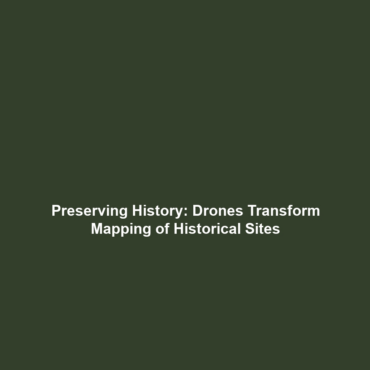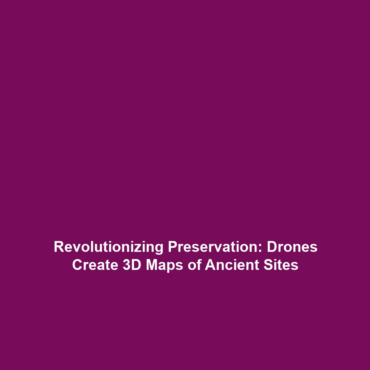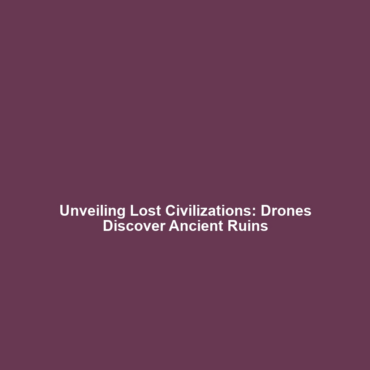Site Preservation and Mapping: Documenting Historical Sites with Drones
Introduction
The integration of drones in science has revolutionized the techniques used for site preservation and mapping, allowing us unparalleled access to document historical sites with precision and efficiency. The use of drones not only enhances the accuracy of topographical mapping but also supports the conservation of cultural heritage. As we delve into this innovative field, we uncover the significance of documenting these important sites and protecting our shared history through advanced aerial technology.
Key Concepts
Understanding Drones in Site Preservation
Drones play a crucial role in site preservation and mapping. Some key concepts include:
- Aerial Photogrammetry: Utilizing drone-captured images to create precise 3D models of historical sites.
- LiDAR Technology: Employing laser scanning to gather topographic data from difficult terrains, providing insights into archaeological structures.
- Remote Sensing: Monitoring sites without direct contact, minimizing disturbances to sensitive areas.
These tools fit into the broader context of drones in science, offering new methodologies for researchers and conservators alike.
Applications and Real-World Uses
The applications of site preservation and mapping with drones are vast and impactful:
- Archaeological Mapping: Drones allow for extensive surveys of archaeological sites, revealing hidden structures and spatial relationships.
- Cultural Heritage Documentation: Capturing high-resolution images and videos to digitally document and archive historical sites before potential deterioration.
- Disaster Response: Rapidly assessing the impact of natural disasters on cultural sites to inform preservation efforts.
Through these applications, we see how documenting historical sites with drones enhances our understanding and preservation strategies.
Current Challenges
While the use of drones in site preservation offers numerous benefits, challenges persist:
- Regulatory Issues: Navigating local laws and regulations surrounding drone flights can complicate operations.
- Technological Limitations: Weather conditions and battery life limit the effectiveness of drone usage in some contexts.
- Data Management: The vast amounts of data generated require sophisticated systems for storage, analysis, and interpretation.
Future Research and Innovations
Looking forward, the field of site preservation and mapping is poised for significant advancements:
- AI Integration: Implementing artificial intelligence for enhanced data analysis can offer deeper insights into historical sites.
- Improved Battery Technologies: Next-generation batteries may extend flight times, allowing for more comprehensive site surveys.
- Increased Autonomy: Autonomous drone systems can undertake complex missions with minimal human intervention, increasing efficiency.
These innovations promise to refine methodologies and improve outcomes in drones in science.
Conclusion
Documenting historical sites with drones is a transformative approach in the realm of drones in science. This practice not only aids in preservation efforts but also enriches our understanding of cultural heritage. As technology continues to advance, the synergy between drones, preservation, and mapping will become increasingly vital. For more insights, explore further topics on drones in archaeology and mapping technologies.




